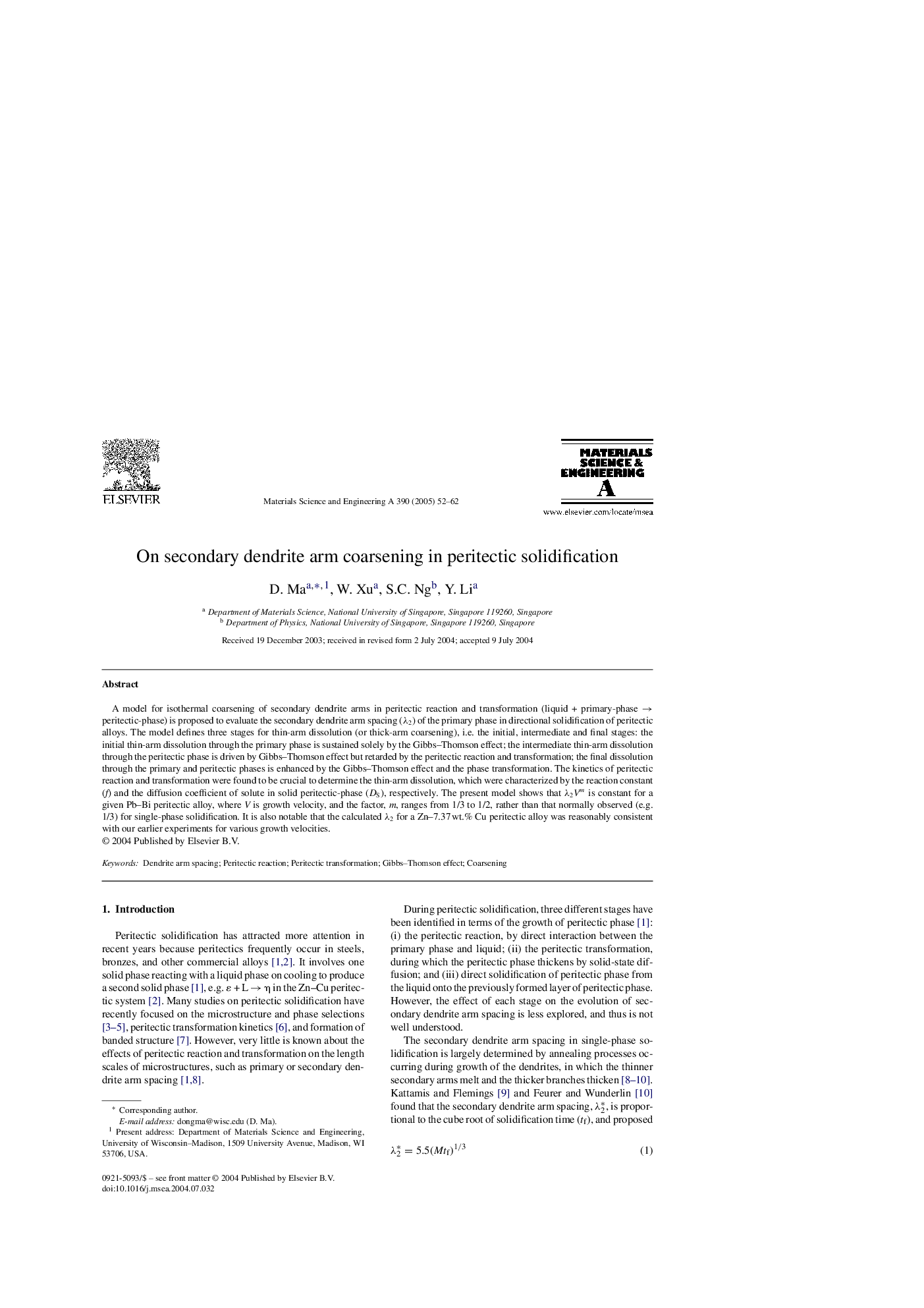| Article ID | Journal | Published Year | Pages | File Type |
|---|---|---|---|---|
| 9796653 | Materials Science and Engineering: A | 2005 | 11 Pages |
Abstract
A model for isothermal coarsening of secondary dendrite arms in peritectic reaction and transformation (liquid + primary-phase â peritectic-phase) is proposed to evaluate the secondary dendrite arm spacing (λ2) of the primary phase in directional solidification of peritectic alloys. The model defines three stages for thin-arm dissolution (or thick-arm coarsening), i.e. the initial, intermediate and final stages: the initial thin-arm dissolution through the primary phase is sustained solely by the Gibbs-Thomson effect; the intermediate thin-arm dissolution through the peritectic phase is driven by Gibbs-Thomson effect but retarded by the peritectic reaction and transformation; the final dissolution through the primary and peritectic phases is enhanced by the Gibbs-Thomson effect and the phase transformation. The kinetics of peritectic reaction and transformation were found to be crucial to determine the thin-arm dissolution, which were characterized by the reaction constant (f) and the diffusion coefficient of solute in solid peritectic-phase (DS), respectively. The present model shows that λ2Vm is constant for a given Pb-Bi peritectic alloy, where V is growth velocity, and the factor, m, ranges from 1/3 to 1/2, rather than that normally observed (e.g. 1/3) for single-phase solidification. It is also notable that the calculated λ2 for a Zn-7.37 wt.% Cu peritectic alloy was reasonably consistent with our earlier experiments for various growth velocities.
Related Topics
Physical Sciences and Engineering
Materials Science
Materials Science (General)
Authors
D. Ma, W. Xu, S.C. Ng, Y. Li,
